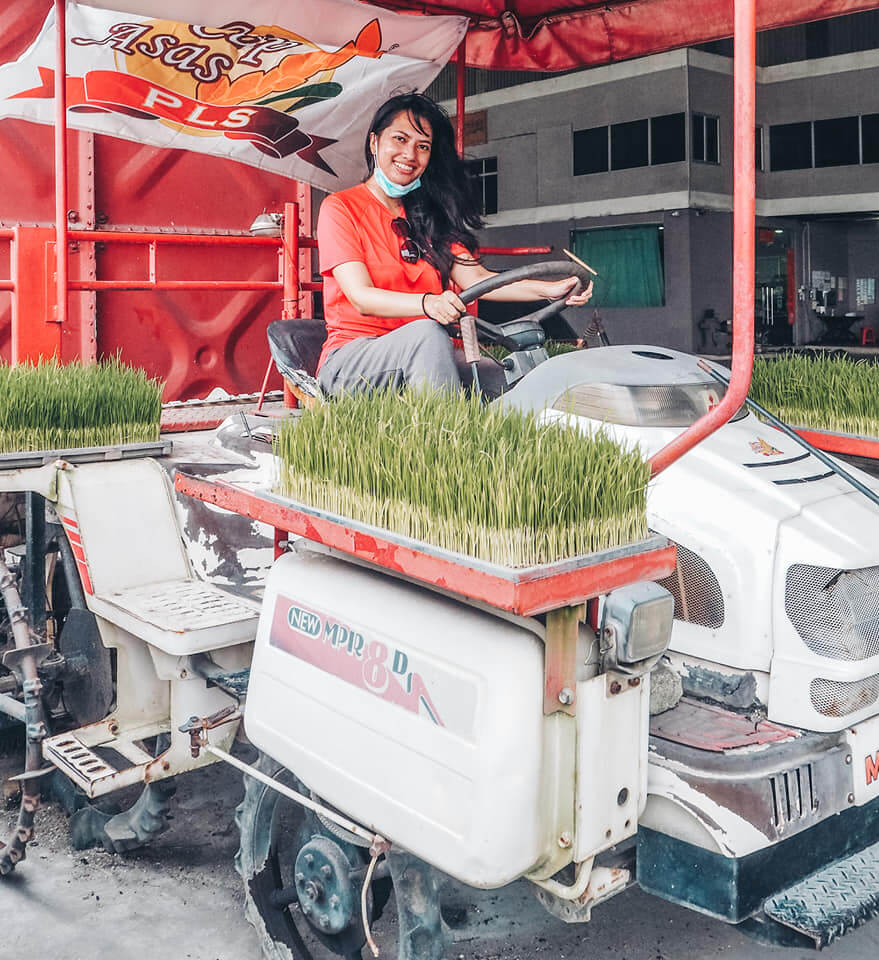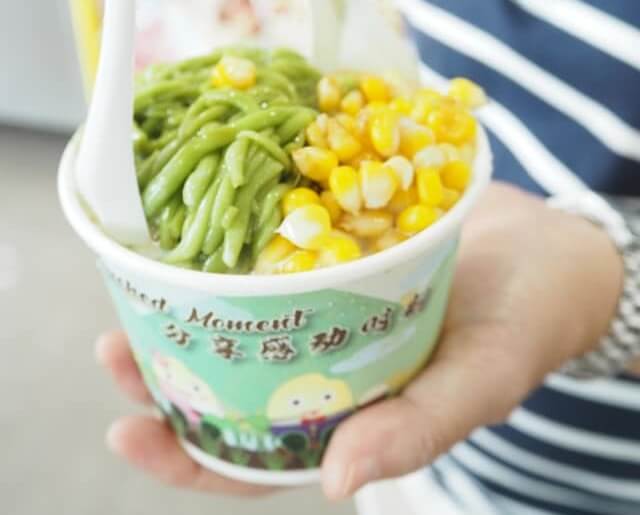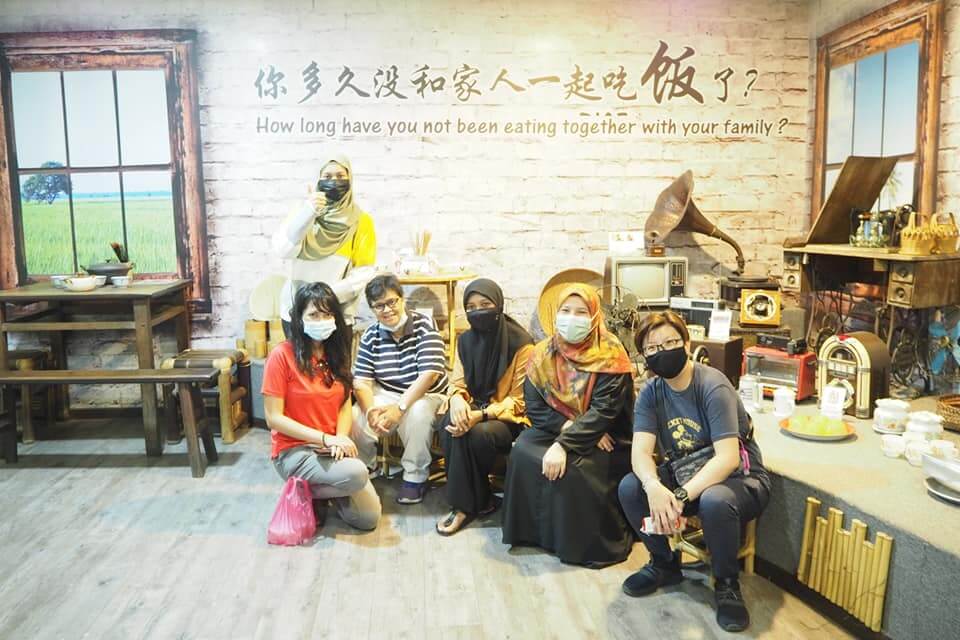English | Bahasa Malaysia
Table of Contents
ToggleVisiting the Sekinchan Rice Museum (Paddy Gallery)
Located in Sabak Bernam, Selangor (on the west coast of Malaysia) is a small farming village called Sekinchan. Despite its small size though, Sekinchan is one of the major rice producers in Malaysia, holding the record for the highest rice production per acre in the country.
As you might expect, a visit to Sekinchan will provide you with unparalleled views of lush, green (or golden) paddy fields for as far as your eyes can see — interrupted only by irrigation canals, footpaths, and small roads for the few vehicles that come by. There are also rice factories, some of which allow visitors to tour their buildings and learn more about rice production.
Considering how much rice I had been consuming all my life, it was quite embarrassing to realize that I knew very little about how it is produced. So, on my trip to Sekinchan with my friends, we made a quick stop at the Sekinchan Paddy Gallery.
About Sekinchan Paddy Gallery

The Sekinchan Paddy Gallery is one of the active rice-processing factories in Sekinchan that welcome tourists to visit.
Owned by PLS Marketing (M) Sdn Bhd (or Kilang Beras Rakyat Sekinchan Sdn Bhd), it’s sometimes also referred to by other names, such as the Paddy Factory, Paddy Museum, Rice Museum, Rice Mill — you get the idea. And that’s because it is all of that: a factory, a museum, a gallery, and even a shop, all under one roof!
PLS Marketing initially started out as a rice transporter, but has since diversified into a wholesale supplier of processed rice, grain trader and cultivator, seller of rice seedlings, and distributor of fertilizers and pesticides.
The Paddy Gallery was established at the end of 2013 to allow visitors to learn every step of paddy planting and processing, from seedling until it becomes the packaged rice you buy at grocery stores.
How to Get to Sekinchan Paddy Gallery
The Sekinchan Paddy Gallery is a huge building in the middle of a rice field –it’s pretty hard to miss even from afar. Located on Jalan Tali Air 5, it’s only an easy cycling distance from our hotel, the Padi Box, but since we were short of time (and it was too hot outside), we drove.
To get more information on how to get to Sekinchan from Kuala Lumpur, both by car and public transports, read my complete guide on Sekinchan.
Entrance Fee & Opening Hours
- Admission Fee: RM5 per person (kids under 95cm tall enter for free)
- Opening Hours: 9 a.m. – 5.30 p.m. every day (lunch break at 12.30 p.m. to 1.45 pm.)
What to Expect at Sekinchan Paddy Gallery
Upon paying the RM5 admission fee, you will receive a small packet of Sekinchan rice as a token of appreciation. You haven’t even stepped into the gallery yet and you’re already getting your money’s worth.

Next, you will go up to the first floor where the gallery is. Your guide will already be waiting to take you to the TV room. Here, you’ll watch a video presentation telling you about the rice fields of Sekinchan — how the paddy used to be planted and processed in the past, and how the methods have evolved throughout the years.
Apparently, using the modern methods and machinery, the 1.2 hectares of land can be planted with 300 pieces of transplanting mats in only 2.5 hours, compared to the 2 days and 8 workers it would take in the past!
If you’re wondering how it’s done, then you have to visit the Paddy Gallery to see it for yourself. It’s very impressive. I had no idea how sophisticated the agricultural technology in Malaysia has become.

After harvesting, the grains will undergo a cleaning process, followed by dehulling and polishing.
Then, they will go through a rice-grading machine to separate the whole grains from broken ones, a destoner machine to completely remove any stones and broken rice, and finally a color-sorting machine, which uses photo-electronic technology to detect and remove all discolored grains.
All these filtering processes will ensure only the best quality rice is produced. The grains that didn’t make the cut will be sold as animal feed.

The video presentation will be followed by a short talk by the guide to better explain the whole process of rice production and to answer any question you may have.
Our guide also introduced us to the types of rice produced by their factory. This includes white rice, Pearl white rice, Pearl fragrant rice, fragrant brown rice, and Basmathi rice.
The Pearl Rice, which is very popular in Sekinchan, is a special product by PLS Marketing. It is a short-grained sticky rice that can be used for sushi and rice pudding.
I would highly recommend the fragrant brown rice for those of you who want the health benefits of the nutritious whole grains but don’t want to say goodbye to the enticing fragrance of your regular jasmine rice.
Apart from rice grains, the factory also produces other rice-based products, such as soaps (yes, rice soaps!), crackers, noodles, and desserts. These and more can be purchased at the shop they have on the ground floor.

After that, we left the room and proceeded to see the rest of the gallery. At the corridor, there were glass windows from which we could look down to see the factory and warehouse. There were also some rice-processing machines on display.

The next part of the gallery is dedicated to old memorabilia of traditional rice farming, as well as household items of traditional farmers. You can see for yourself how much the paddy farming technology has progressed since then.

As with any other tour, it predictably ended at a souvenir shop where you can buy something as a remembrance of your visit. While I usually don’t care for souvenir shops, I didn’t mind this one because almost all of the items on offer were edible. Now that’s my kind of souvenir!


Some of the products have been vacuum packed for your convenience and can even be taken on your flight home.
Also, don’t forget to try their unique brown-rice cendol. There’s probably only one of its kind in the entire world!

Fun Facts About Sekinchan Rice Fields
- In the Chinese language, Sekinchan means “a village that is suitable for farming”.
- The soil and weather in Sekinchan is ideal for the farming of rice, fruits, and oil palm trees.
- The total land area of fruit farms and rice fields in Sekinchan is about 4,300 acres.
- The vast paddy fields in Sekinchan produce one of the highest yields of rice in Malaysia.
- Rice needs a lot of water to grow. In any rice field, you will find irrigation canals and aqueducts.
- An average adult would take a total of 19 years to consume one ton of rice, assuming they eat rice twice a day, each time with a serving size of 70g. If they eat three times a day, it would take only 13 years.
- In the past, scarecrows used to be placed in the middle of rice fields to scare away birds. But according to our guide, now they’re not used anymore because birds have gotten too smart to be fooled by such trickery.
Final Thoughts
Is Sekinchan Paddy Gallery worth visiting?
Yes. For such a low fee, the tour is packed with information that I think any Asian or any rice lover worth their rice salt should know like the back of their hands.
Learning about our staple food and the intricate process involved in producing it is a valuable experience. It teaches us to have better appreciation for the food on our table.
So, the next time you go to Sekinchan, aside from admiring the green paddy fields, do spare some time to learn about rice at the Sekinchan Paddy Gallery.

Lot No 9990, Jalan Tali Air 5,
Ban 2, 45400 Sekinchan,
Selangor, Malaysia
Phone: +6 016-205 6558 (General) / +6 016-215 7028 (Tourism)
Pingback:Melawat Galeri Padi, Sekinchan – Belajar Cara Beras Dihasilkan – Ummi Around Malaysia